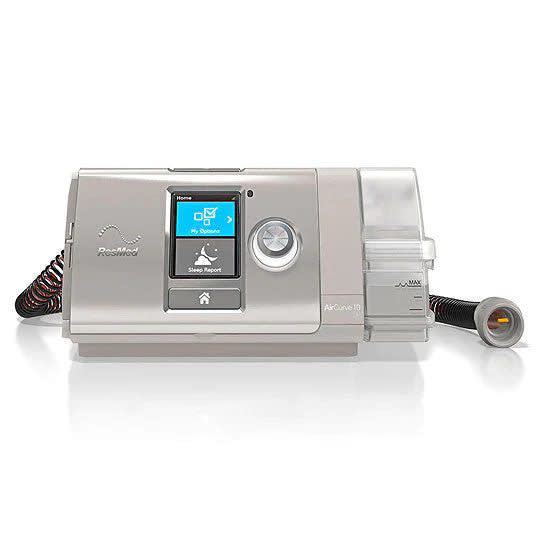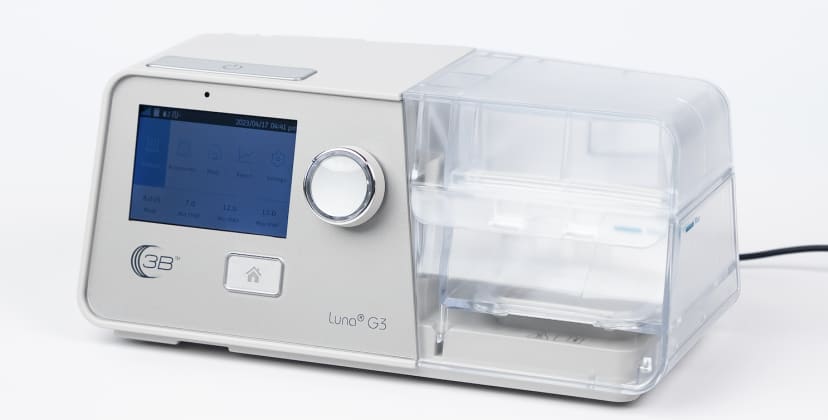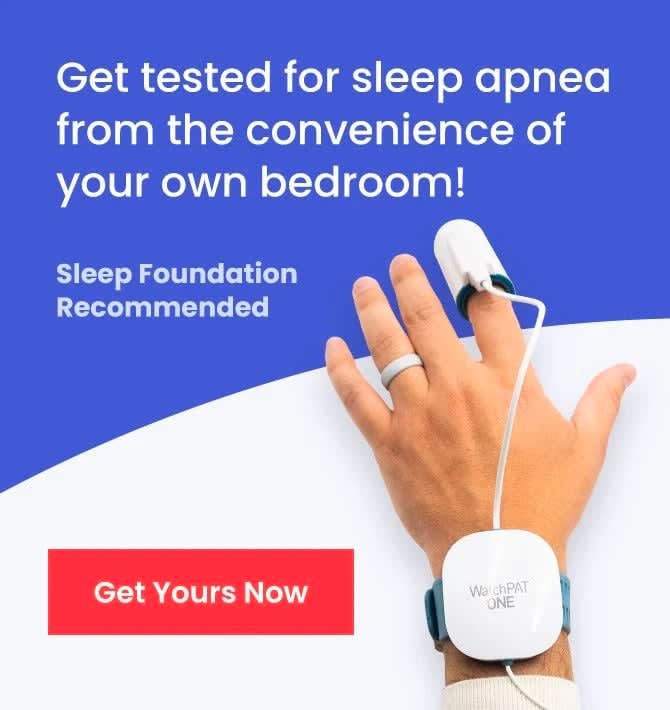When you buy through our links, we may earn a commission. Products or services may be offered by an affiliated entity. Learn more.
Best BiPAP Machines: Top Picks From Our Experts
Where are you in your sleep apnea journey?
You need a prescription to buy a CPAP machine
Take an at-home sleep study to get started
- Test for sleep apnea and other sleep issues
- Results in one night from your own bed
- Receive a prescription for a CPAP machine
Discover expert-recommended CPAP machines
View Our PicksDiscover expert-recommended CPAP machines
Don’t have a prescription? Don’t worry, a free virtual consultation to receive your prescription is included with all the CPAP machines on the following list.
View Our PicksFinding the right bilevel positive airway pressure (BiPAP) device may feel overwhelming at first. Just understanding the treatment options for sleep apnea, let alone knowing which device is best, involves reviewing a huge amount of information.
We know how difficult this process can be, so our expert team has done the legwork to help you find the best BiPAP machine. Beyond highlighting specific brands and models, we’ll also cover the logistical issues you’ll encounter when starting BiPAP therapy, including purchasing requirements and which accessories are needed.
Similar to the benefits of the best CPAP machines, using a BiPAP device prescribed by a doctor can improve health outcomes if you have sleep apnea. Our guide provides key information that can bring you one step closer to deeper and more restful sleep.
Best Overall
ResMed AirCurve 10 VAuto BiPAP Machine
Use this link for the most current ResMed discount
Shop Now at Sleep DoctorA compact but advanced machine with a built-in humidifier and an auto-adjusting algorithm to keep up with your breathing.
See More Details
Best Value
Luna G3 BPAP 25A Machine

Use this link for the most current React Health discount
Shop Now at Sleep DoctorThis intuitive device has an easy-to-read screen that monitors your temperature and humidity levels.
See More DetailsJump to: Best BiPAP Machines | Full Reviews | How to Shop | How We Vet Products
In-Depth Reviews
Best Overall
ResMed AirCurve 10 VAuto BiPAP Machine
Use this link for the most current ResMed discount
Shop Now
The ResMed AirCurve 10 VAuto BiPAP Machine checks a lot of boxes for people who rely on nightly therapy for sleep apnea. Defining features include an integrated humidifier and an AutoSet algorithm that adjusts pressure settings throughout the night.
-
Pros
-
Built-in heated humidifier
-
Compact and lightweight design
-
Auto-adjusting algorithm dynamically adapts to your breathing needs
-
-
Cons
-
Heated tubing for rainout prevention must be purchased separately
-
Some BiPAP users may not need the advanced features
-
Price
$1,995
Level
27 dBA
The ResMed AirCurve 10 VAuto BiPAP Machine combines solid performance with advanced features like data tracking, a heated humidifier, and differentiated pressure settings. With its easy-to-use design, the AirCurve 10 should appeal to a broad range of BiPAP users.
What Does It Do?
The machine is equipped with an AutoSet algorithm that provides different pressure levels for inhalation and exhalation throughout the night, while Easy-Breathe technology allows the machine to emulate normal breathing patterns to further enhance comfort and efficiency. An integrated humidifier heats the water prior to air delivery. This reduces condensation within the connective tube and helps prevent uncomfortable rainout that can leave you feeling congested.
The machine tracks and stores your therapy data, which you can then download onto an SD card to share with your medical provider. Note that the AirCurve 10 is not equipped with cellular technology for data sharing with ResMed’s app.
Who It’s Best for
The AirCurve 10 is ideal for sleepers who need a machine that offers different pressure settings for inhalation and exhalation. The pressure automatically adjusts to your breathing to make for an overall more comfortable experience. Some BiPAP machines can cause dry or scratchy throats. If this is a concern, you may benefit from the integrated humidifier to moisten the pressurized air that you’re breathing in.
The AirCurve 10 qualifies for free shipping, and it includes a 60-night trial. You may return unused machines during this timeframe for a refund.
Best Features
Luna G3 BPAP 25A Machine
Use this link for the most current React Health discount
Shop Now
The Luna G3 BPAP 25A Machine is chock-full of helpful features to keep you comfortable at night. The built-in heated humidifier is an especially nice touch, as this can reduce the potential for rainout and help you avoid feeling congested.
-
Pros
-
Includes four therapy modes
-
Heated tubing with a preheat function prevents condensation buildup
-
Front-facing screen lets you easily monitor temperature and humidity levels
-
-
Cons
-
Lacks spontaneous-timed mode, a more advanced therapy setting included with the Luna G3 30VT model
-
Not suitable for people who live in very hot or humid climates
-
Price
$2,049
Level
26 dBA
The Luna G3 BPAP 25A Machine from React Health (formerly 3B Medical) has several advanced features to keep you as comfortable as possible. Heated tubing, an integrated humidifier, preheat settings, automatic ramp features, and a user-friendly interface make the device an accessible and convenient choice for sleepers who need BiPAP therapy.
What Does It Do?
The device measures roughly 60 square inches. A slim profile of 4.5 inches and stable base allow you to place it on any flat surface. The humidifier has a water capacity of 360 milliliters. At less than 4 pounds with the humidifier attached, the machine is fairly lightweight and portable. The interface features a built-in modem, as well as controls for adjusting various settings and accessing sleep reports. All orders include the machine, tubing, an air filter, and a power supply.
Who It’s Best for
We consider the Luna travel-friendly due to its compact design, so we recommend this device for frequent travelers. The built-in humidifier also caters to sleepers who experience dry or scratchy throats during CPAP therapy. You can preheat the humidifier to ensure optimal breathing as your therapy begins, and heated tubing with adjustable humidity control helps prevent condensation and rainout that can cause you to feel congested. An auto-ramp feature gradually increases the pressure from a low level to your prescribed inhalation and exhalation settings, allowing you to breathe with ease.
The Luna never exceeds 26 decibels, making it relatively quiet compared to other BiPAP machines. The user-friendly interface provides regular sleep reports and allows you to adjust heat, humidity, and other device settings.
While the Luna is somewhat expensive, its price-point is on par with other advanced BiPAP machines on the market today. The Luna also qualifies for free shipping if you place your order through The Sleep Doctor. The device is backed by a 2-year manufacturer’s warranty.
What Is a BiPAP Machine?
A bilevel positive airway pressure (BiPAP) machine treats sleep apnea by delivering pressurized air through a hose and a mask to keep the user’s upper airway open during sleep. It is called a bilevel device because it provides two different air pressure levels: a higher level when you breathe in and a lower pressure when you exhale.
What Is the Difference Between BiPAP and CPAP Machines?
The difference between BiPAP devices and continuous positive airway pressure (CPAP) machines is that BiPAP uses two different air pressure levels, while CPAP uses one fixed pressure setting.
BiPAP and CPAP machines have similar designs and accessories, though CPAP machines are a more common initial treatment for obstructive sleep apnea. BiPAP machines tend to be used if CPAP therapy was not effective or for people with more complex breathing conditions.
What Accessories Should You Have for a BiPAP Machine?
Most BiPAP machines come with standard tubing and at least one air filter. Besides those accessories, at minimum you’ll need to purchase a CPAP mask before beginning BiPAP therapy. (Manufacturers and retailers use the phrase CPAP mask as a catchall term, but most mask models can also be used with BiPAP machines.)
Other BiPAP accessories are designed to make therapy more comfortable or more convenient, which may help improve treatment adherence and long-term therapy benefits.
| Accessory | Description |
|---|---|
| Mask | A mask allows pressurized air generated by the device to reach your airway. Full-face masks deliver air to both the nose and mouth, while nasal masks and nasal pillow masks direct airflow to just the nose. Your doctor can advise you on the best mask type for your condition. |
| Mask Cushions | Full-face and nasal masks feature cushions that seal against your face. Nasal pillow masks have soft inserts that seal inside your nostrils. Since cushions and nasal pillows need to be replaced more frequently than the mask frame and headgear, most CPAP retailers sell them separately in addition to offering them as part of complete mask kits. |
| Headgear | Like mask cushions, headgear is sold individually and as part of mask kits. The headgear is typically made up of one or more straps that keep the mask from moving out of position. It has to be replaced if it gets too dirty or worn out. |
| Filters | Air filters are an essential accessory because they purify the air you breathe during BiPAP therapy. If your device has a reusable filter, you will need to wash it regularly and replace it periodically based on the manufacturer’s instructions. If your machine uses disposable filters, you will need to replace them more frequently. |
| Tubing | Most BiPAP machines come with a short length of unheated tubing that connects the device to the mask. Longer and heated hoses are sold separately. Heated tubing is often preferred by people who use a BiPAP machine with a built-in humidifier, since unheated hoses tend to form condensation when warm moisturized air passes through. |
| Tubing Holder | Hose holders can keep BiPAP tubing from getting snagged or twisted during the night. Some models stand next to your bed, while others are designed to attach to a wall or headboard. |
| Battery | An external battery is an optional accessory that lets you use a BiPAP machine when you aren’t near a wall outlet. Because it isn’t essential, a rechargeable battery has to be purchased separately. Before buying one, it’s important to make sure that it’s compatible with your BiPAP device. |
| CPAP Pillow | CPAP pillows feature curves or cutouts to accommodate the bulk of a mask. They may be particularly beneficial for BiPAP users who sleep on their side or stomach. |
| Device Case | When you receive your BiPAP machine, it may come in a zippered case that can also hold core accessories. A case can be especially handy when traveling with a BiPAP machine. |
What to Consider in a BiPAP Machine
When the time comes to shop for a BiPAP machine, a handful of tips can help you find the best machine to improve your nightly sleep. First and foremost, listen to your doctor’s advice, as they know the specifics of your condition and can make tailored recommendations.
Pressure Range
The pressure range tells you the minimum and maximum air pressure level that a BiPAP machine can provide. Most BiPAP devices have a range of around 4 to 25 centimeters of water pressure (cm H2O), though some can reach 30 cm H2O. When you purchase a BiPAP machine, the range will be calibrated based on your prescription.
Climate Control
Climate control includes features like a humidifier that adds moisture to the air that you inhale and exhale. Humidification can reduce nasal dryness when using a BiPAP machine, and most modern devices include a built-in humidifier.
For any device you’re considering, check if there is a built-in humidifier and controls to adjust the moisture level. If available, heated tubing can reduce condensation in the hose, but this type of tubing may need to be purchased separately.
Noise Level
The sound level, represented in decibels, tells you how loud a BiPAP machine is when it is in operation. If you are easily bothered by noise at night, look for a whisper-quiet device. On average, BiPAP machines produce about 30 decibels when operating at 10 cm H2O.
Special Features
Special features that you can look for in a BiPAP machine include pressure modifications and data tracking capabilities. Some BiPAP machines include a pressure ramp feature, which lets the pressure level slowly build up as you doze off.
It’s also advisable to look into how a device tracks and transmits data about your breathing since it’s likely that you will need to share this information with your doctor. The data may be kept locally on an internal SD card or sent wirelessly to cloud storage.
BiPAP machines are among the most complex positive airway pressure (PAP) devices, and some models include sensors and advanced algorithms that can detect breathing patterns and adjust air pressure levels accordingly. Your doctor will prescribe the BiPAP therapy mode that’s most appropriate for your situation, so it’s important to purchase a machine that can accommodate the prescribed settings.
Recalls and Warranties
Two things to consider for any BiPAP machine are recalls and warranties. Recalls occur when a safety problem has been found, so it’s wise to make sure the device you’re looking at hasn’t been subject to any recent recalls.
A warranty is a policy that covers either repairs or replacement of your device if it breaks down prematurely. Most BiPAP devices have a two-year limited warranty.
Where Can You Buy a BiPAP Machine?
You can buy a BiPAP machine from a medical equipment supplier either online or in a local store. Your doctor or a sleep clinic may also be able to sell you a BiPAP machine.
For many people, the best way to buy a BiPAP machine is to shop online. This lets you browse various sites and get a good deal without having to leave the comfort of home. However, many online BiPAP retailers do not accept insurance, so it’s wise to check the reimbursement policies of your insurance carrier.
Pricing, Prescriptions, and Insurance Coverage
BiPAP machines cost around $1,700 to $3,000 on average. The cost varies by the brand, model, and features.
To buy any BiPAP machine, you’ll need a prescription from a licensed medical provider. We recommend having your prescription ready when you order your BiPAP device.
Health insurance may cover at least part of the cost of a BiPAP machine, typically subject to a deductible. Depending on your diagnosis, some insurance companies may require that you first unsuccessfully try CPAP therapy before they will cover a BiPAP device.
Some insurers stipulate that you must first rent a machine and use it regularly for a set period before it’s yours to keep. To continue receiving coverage after starting BiPAP therapy, your doctor may have to verify that you are using the device consistently and that it is improving your breathing.
Dive Deeper: In-Depth PAP Guides
If you need to expand your search to include other PAP products, check out our expert-vetted picks across a range of categories.
Data-Driven Results You Can Trust
We take pride in helping you find products that can improve your sleep. We have years of experience testing and evaluating sleep products, and we dove into the research to identify the best BiPAP machines and top options for both essential and optional accessories.
Frequently Asked Questions
Do you need a prescription for a BiPAP machine?
Whether shopping online or in a brick-and-mortar store, you need a prescription from a licensed health care provider in order to buy a BiPAP machine.
Can you use a CPAP machine instead of a BiPAP machine?
Depending on your diagnosis, you may be able to use a CPAP machine instead of a BiPAP machine. If you have obstructive sleep apnea and no other breathing problems, you may be advised to try a CPAP machine first.
BiPAP machines are more likely to be recommended if you have complicated breathing problems, such as a mix of both obstructive sleep apnea and central sleep apnea. A BiPAP device may also be prescribed if you already tried using a CPAP machine but struggled with the fixed air pressure level.
Can you buy a BiPAP machine online?
You can buy a BiPAP machine online through authorized medical equipment suppliers. Buying online lets you research different models and compare prices. When buying online, you will still need to provide a copy of your prescription.
How do you clean a BiPAP machine?
The most important advice we can give about cleaning a BiPAP machine is to read the instruction manual and always follow the manufacturer’s guidance.
For most BiPAP machines, you can clean the tubing and mask with warm water and mild soap. Avoid using harsh cleaners like bleach, and avoid products that use ultraviolet light or ozone gas.
Some accessories, like the mask, should be wiped down every day. Deeper cleaning of the mask, tubing, and humidifier water chamber should typically be done weekly. The user manual should give a more specific timeline for how often to clean and replace BiPAP components.
Are there any side effects from using a BiPAP machine?
There can be side effects from using a BiPAP machine, including skin irritation or sores around the mask area, dryness in the nose or mouth, and general discomfort when using the device.
If you have these or any other problems when using a BiPAP machine, make sure to bring them up promptly with your doctor. Practical steps, such as adjusting the humidification or trying a new mask, may minimize discomfort and other side effects.
Are there any alternatives to using a BiPAP machine?
There are alternatives to using a BiPAP machine, but their viability depends on the cause and nature of your breathing problems. For obstructive sleep apnea, BiPAP alternatives may include another type of PAP device, upper airway surgery, or wearing a custom-fitted oral appliance during sleep.
Because treatment is tailored to your needs, you should ask your doctor about what alternatives may be available and their pros and cons in your situation.

Still have questions?
Our product experts have extensive experience testing just about every sleep product on the market.
Send an email to AskAnExpert@sleepfoundation.org with your questions and we’ll help you find exactly what you’re looking for.


